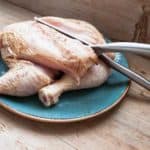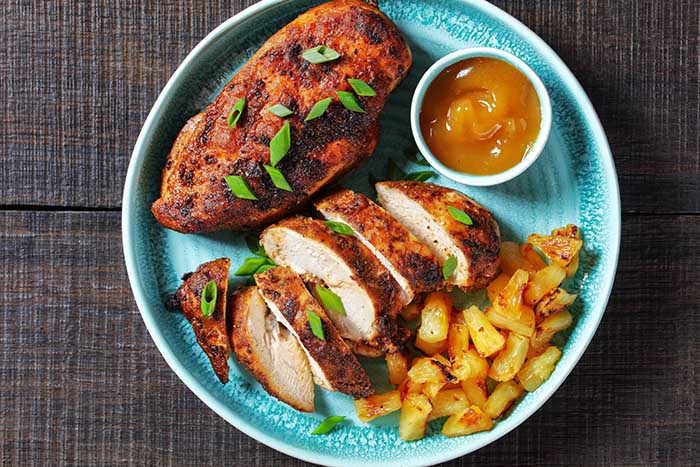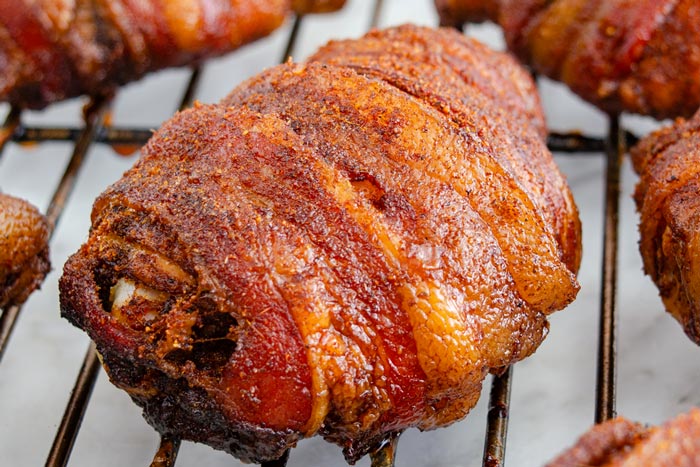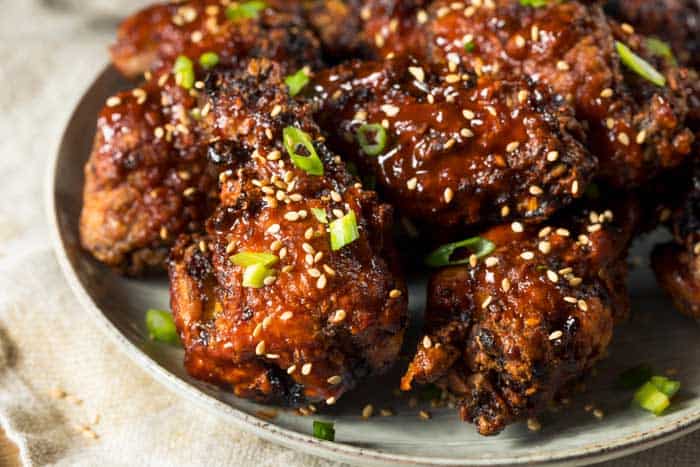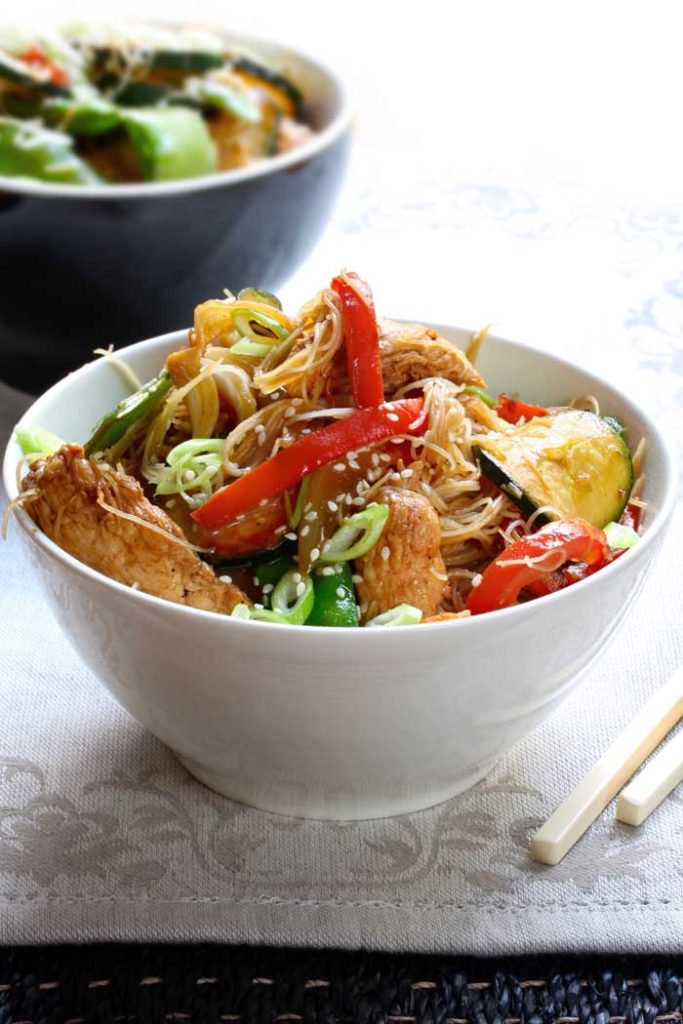Discover the big differences between chicken thighs and chicken drumsticks, and the best ways to cook them. BBQ chicken recipes, cooking guides, and more.
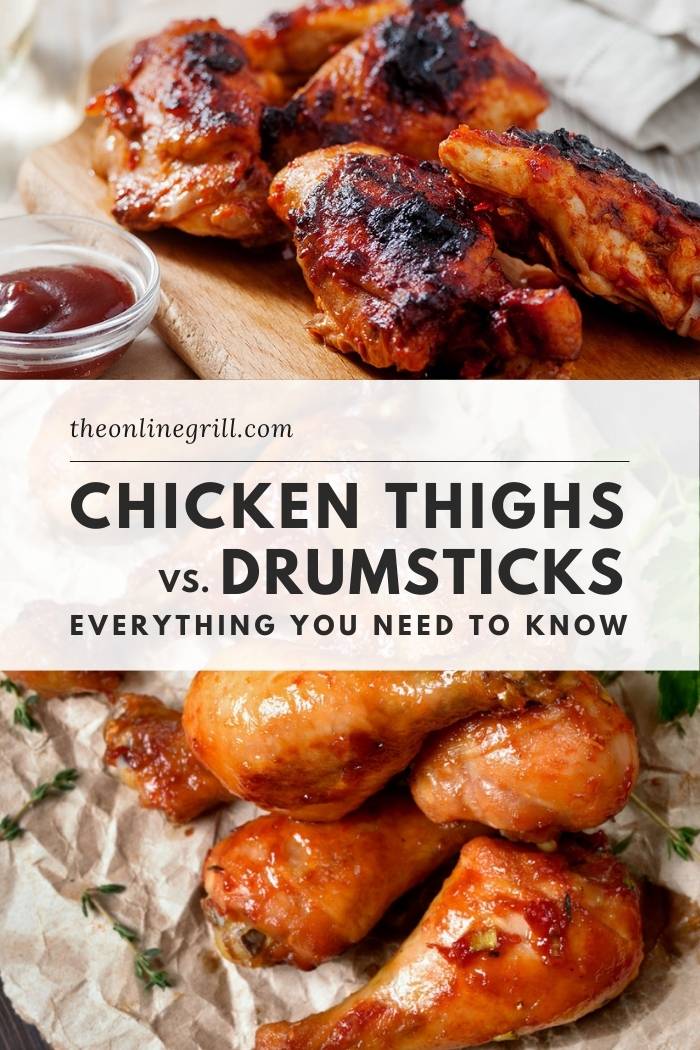
There are hundreds, even thousands of recipes that call for the use of chicken. The meat that you get from one part of the chicken can be vastly different from another part of the bird. Though the differences between drumsticks and thighs are subtle, they may lead you to choose one over the other for certain cooking purposes.
In this guide, we’re exploring the differences between chicken drumstick (often referred to as leg) and chicken thighs, including which recipes they tend to be best for, the texture and flavor they provide, and their nutritional value.
Thigh vs. Drumsticks
Both of these cuts are good for barbecue, but thigh may take longer due to often having thicker meat; drumsticks are famous ‘finger food’ which may be preferable for serving as part of your party platter. The thigh also has a higher fat content and a juicy texture, good for creating stock and for cooking low and slow.
The Main Differences
Fat Content
Both of these types of meat are very flavorful, but there is a higher fat content in the thigh, partially due to its larger size. As that fat renders while cooking, it can result in a very juicy and tender dish. Of course, the nutritional considerations of a higher fat content may lead some to opt for chicken drumsticks for a healthy dish.
The Shape of the Bone
While people often refer to the drumstick as a chicken leg, the thigh and drumstick are technically both part of the leg of the animal. The thigh consists of the femur bone as well as the hipbone and, of course, the meat connected to it. The drumstick is the tibia bone, as well as the kneecap and the meat that surrounds this bone.
The shape is also what dictates the way these cuts of chicken may be used. A chicken drumstick basically comes with an inbuilt handle, making it perfect for parties where people are standing up and eating.
Amount of Meat (and Bone)
There is usually more meat on the thigh bone than there is on the drumstick. They also have very thin bone in them, which is easy to remove. You can take this out yourself or get a butcher to do it, and the result is more akin to chicken breast in terms of having a chunk of meat with no bone. Drumsticks have less meat and are usually eaten on the bone.
Chicken Drumsticks Explained
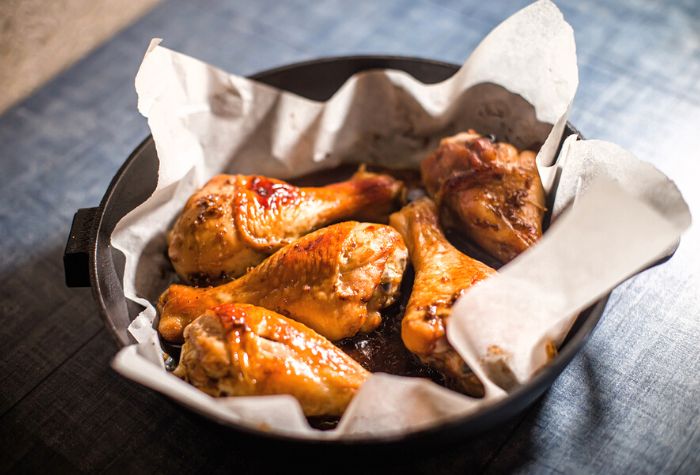
Drumsticks get their name from their appearance. Their bones could easily be used to play some percussion! They are the lower part of the leg but don’t include the feet, which are rarely eaten in Western cuisine. With so much of the meat near the bone, you get a really strong flavor from a chicken drumstick.
You’ll notice that this is a much darker meat than you would find on a chicken breast. When preparing and eating, you may also notice that there are parts of the tendon still attached, as well as the kneecap. The texture is usually juicy with a bit more chew to it than some other types of meat.
Fat & Protein Content
While there is a lot of fat on the cuts around the drumstick, the drumstick itself doesn’t contain a huge amount. There are usually around 8 grams of fat in a drumstick. The skin is very fatty, so you can remove this for a healthier option (though it does create a crispy, flavorsome coating).
In terms of protein, an average 44 grams of drumstick meat contains 12.4 grams of protein, this is comparable to the amount you will find in the thigh.
Chicken is a very strong source of protein in general, and drumsticks are no exception.
Uses
Drumsticks are versatile, but also have a bolder, richer flavor than breast meat. A famous chain of Kentuckian takeaways has taught us that they can be deep-fried, but they can also be baked, grilled, and barbecued as well as pan-fried. For slower methods of cooking, it is crucial that you make sure the chicken has been cooked to 165°F (74°C) internally.
The versatility also extends to the flavors you can add, from rich marinades to simple salt and pepper rubs, and even breaded coatings. Chicken drumsticks can taste amazing in many different styles, but our favorite is barbecue smoked over applewood. In our smoked chicken drumsticks recipe, we prepare them in our paprika dry rub before cooking for an hour over smoke. Trust us, you won’t look back once you try it.
“Lollipop” style drumsticks are popular for BBQs and finger food. The meat is cut so that it is loose around the bone end and then is forced down towards the base, giving a rounded, lollipop appearance and a convenient “stick” to eat it with.
Chicken Thighs Explained
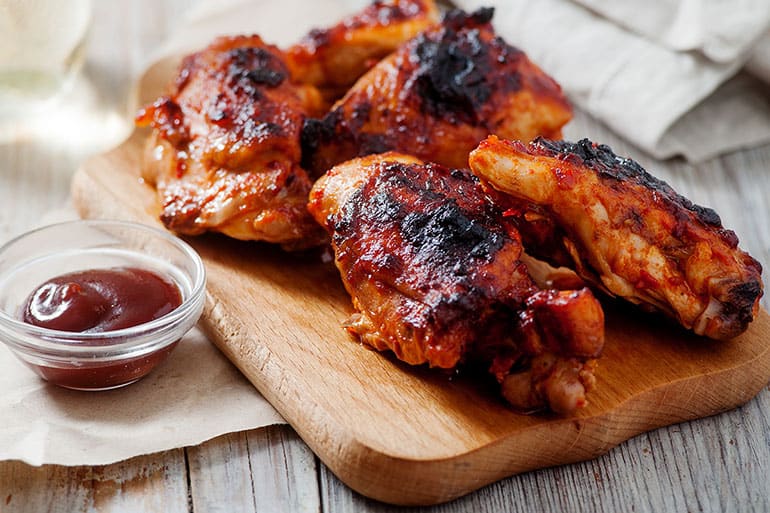
Thighs come from the lower part of the bird, but are still higher than the drumstick, to which the thighs are connected via a kneecap.
The darkness of the meat is very similar to that of a drumstick, and the texture may be a little more rubbery, which you may notice during preparation. When you cook the meat, though, the higher fat content should lead to a nice tender filet.
Fat & Protein Content
An average chicken thigh will contain around 13-14 grams of protein. The difference in protein content with a drumstick is negligible but slightly higher as you do get more meat on average from this cut.
Fat content is slightly higher than in a drumstick, but again this is largely due to the fact that thighs are slightly bigger. Expect around 10 grams of fat from a medium thigh that has been grilled.
Uses
The uses are also similar to drumsticks, but the fact that the thigh is so easily de-boned means it is easier to use chunks or slices in a recipe, something you can’t really do with a drumstick. The pronounced flavor of a thigh plays really nicely with bold seasonings and marinades, opening up a world of new recipes to experiment with.
For our smoked chicken thighs recipe, we prepare the chicken in a simple overnight brine before covering in paprika and chili powder dry rub. Then, we smoke them over 225°F (107°C) heat for 2 hours. The end result? Juicy, incredibly tender barbecue chicken thighs.
Grilling the thigh is a popular method to cook it and it can add a really smoky, charred taste. Thigh meat can also be fried, baked, or slow-cooked as long as you hit the internal temperatures needed for safety, 165°F (74°C).





